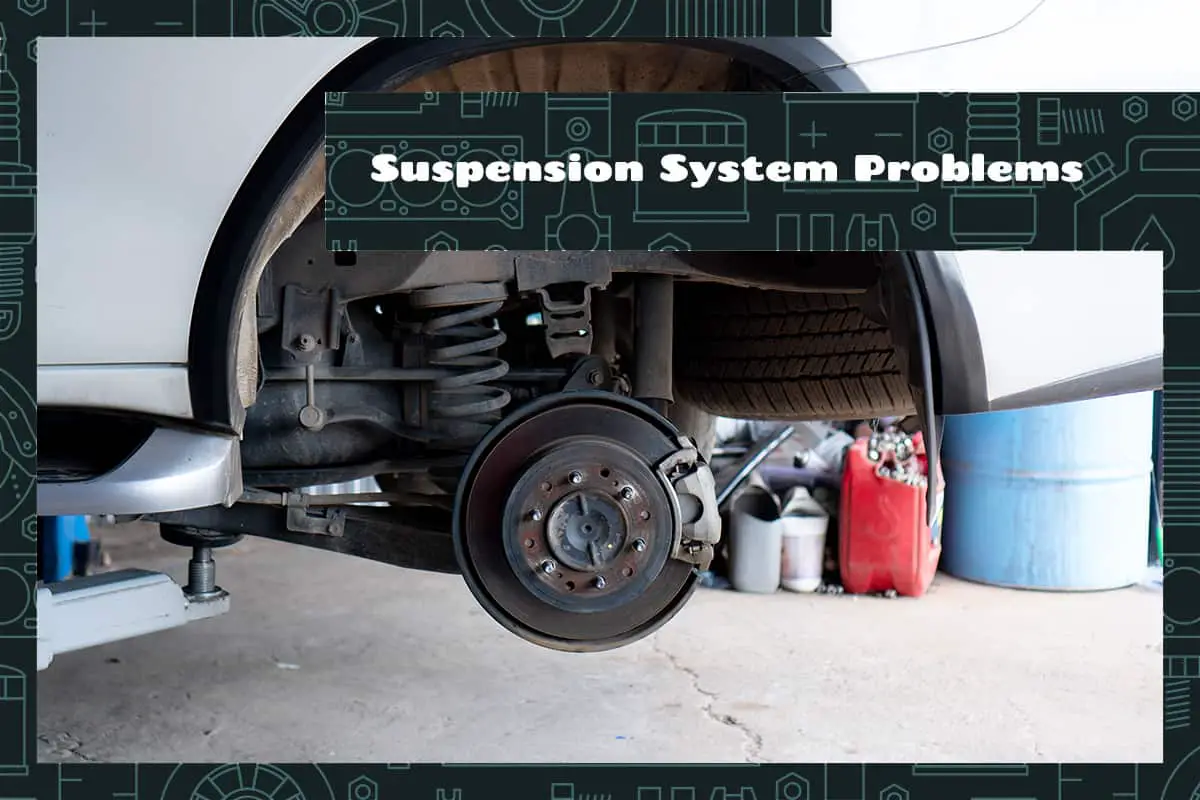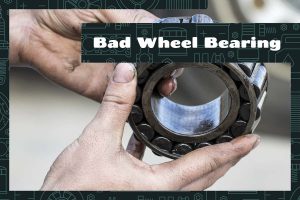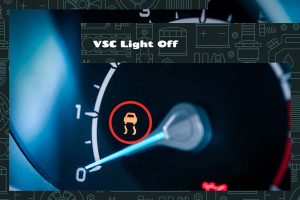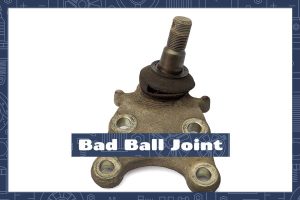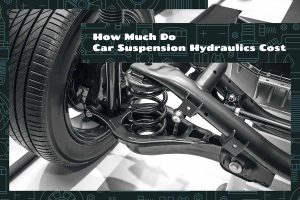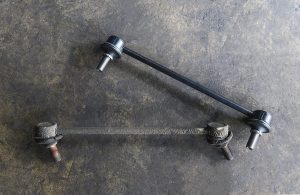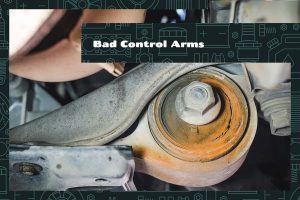Your car’s suspension system is like a magic cushion that absorbs shocks from the road, providing you a smoother ride and keeping your tires in contact with the ground to ensure safe steering and stopping. But as important as it is, the suspension can be one of the first things to break down.
The following problems may indicate a faulty suspension system:
- Worn-out or broken shocks and struts
- Damaged springs
- Worn out bushings
- Failing control arms and ball joints
In this article, we’re going to journey into the world of suspension systems. We’ll learn about different suspension problems, how to spot them, their effects on your ride, and ways to fix them.
A Brief Look at the Suspension System
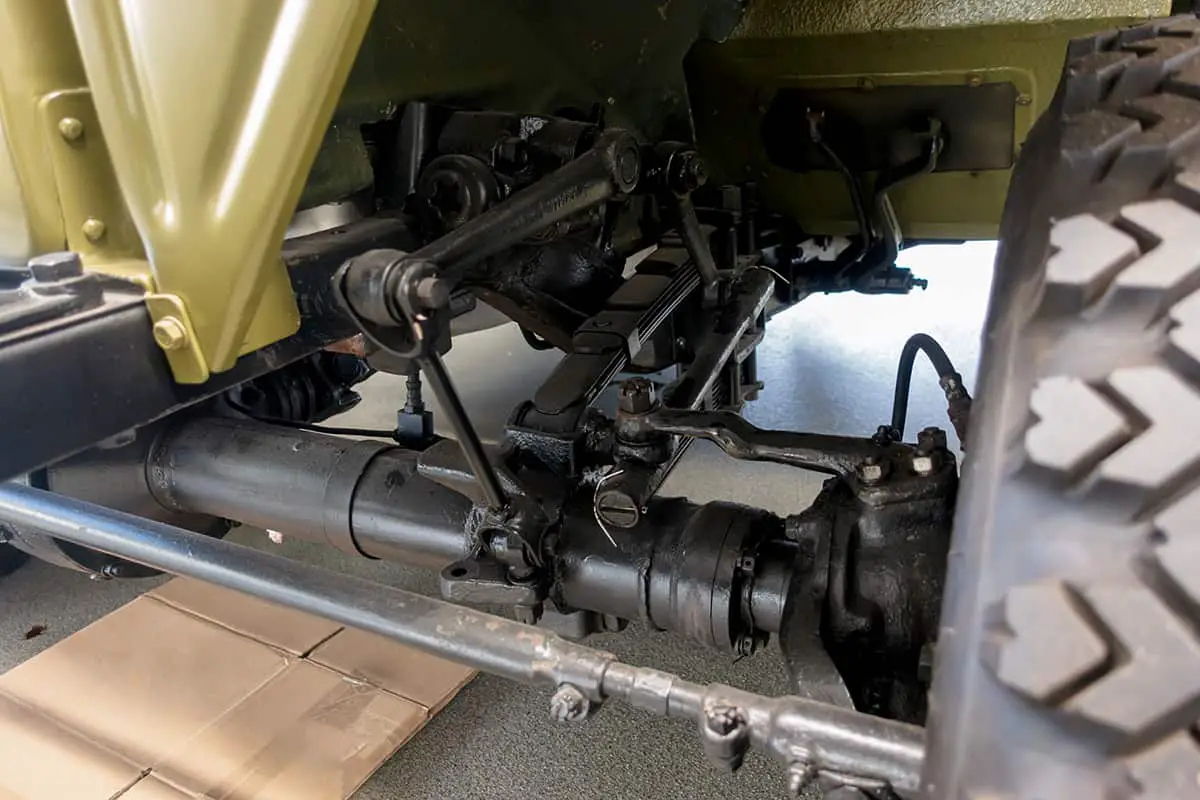
The suspension system is a key part of your vehicle that connects it to its wheels. Think of it as a bridge linking your car to the road, designed to absorb all the bumps and dips, ensuring you don’t feel them inside the cabin. It consists of several components, with the most active players being:
- Shocks and Struts: These parts absorb the impact and vibrations from the road, ensuring your ride is comfortable. Shocks, short for shock absorbers, dampen the energy absorbed from the road, while struts provide structural support to your vehicle’s suspension system.
- Springs: There are three types of springs used in vehicles – coil springs, leaf springs, and torsion bars. They bear the weight of your vehicle and absorb large bumps.
- Bushings: These are small rubber or polyurethane components that help to cushion the vehicle’s suspension parts and reduce vibration.
- Control Arms and Ball Joints: Control arms connect the vehicle’s suspension to its frame, and the ball joints are pivot points between the wheels and suspension.
What a Well-Maintained Suspension System Means for Your Car

Maintaining your suspension system in good shape is like keeping your vehicle’s bridge strong and stable. A well-maintained suspension system has several benefits:
- Enhanced Vehicle Handling: A well-functioning suspension system improves control over your vehicle. It ensures your car follows your steering inputs precisely, providing better handling and preventing rollovers during sharp turns or unexpected maneuvers.
- Comfortable Ride: With a healthy suspension system, your car smoothly navigates bumps and dips in the road. This means a more comfortable ride for you and your passengers.
- Preserved Tire Longevity: A good suspension system ensures even tire wear, extending the life of your tires. If your suspension is failing, it could lead to uneven tire wear, meaning you’ll have to replace your tires more often.
- Optimal Car Performance: The suspension system impacts other areas of your car, including the steering system and alignment. A well-maintained suspension thus contributes to the overall performance and safety of your vehicle.
Common Suspension System Problems
The suspension system can develop problems over time. Here are the common issues that can occur in a suspension system:
1. Broken or Worn Shocks and Struts
The shock absorbers and struts in your car’s suspension system play a significant role in smoothing out your ride by absorbing the bumps and dips on the road. However, they can wear out over time or break due to harsh driving conditions.
Symptoms of worn or broken shocks and struts can include a rough ride, the vehicle bouncing excessively after going over a bump, or the car nosediving when you apply the brakes. If ignored, this problem can lead to uncomfortable driving, poor handling, and increased wear and tear on other vehicle components.
2. Damaged Springs
The springs bear the weight of your vehicle and absorb larger bumps on the road. If a spring breaks, you may notice your vehicle leaning to one side, sagging in the front or rear, or bouncing excessively.
The vehicle may also bottom out when going over speed bumps or entering a driveway. Driving with damaged springs can cause other suspension parts to wear out faster and may affect the handling and safety of your vehicle.
3. Worn Out Bushings
Bushings are small rubber or polyurethane pieces that help to cushion the suspension parts and reduce vibration. Over time, these bushings can wear out or degrade.
Symptoms of worn bushings may include clunking or rattling noises, loose handling, or irregular tire wear. Ignoring worn bushings can lead to increased vibrations, reduced ride comfort, and damage to other suspension components.
4. Failing Control Arms and Ball Joints
The control arms connect your car’s suspension to its frame, and the ball joints allow for movement between the wheels and suspension.
When these parts start to fail, you might hear a knocking sound when going over bumps, feel a vibration in the steering wheel, or have difficulty steering the car. Failing control arms and ball joints can affect your vehicle’s steering and handling and if not addressed, could potentially lead to a loss of control while driving.
Repairing and Replacing Suspension Components
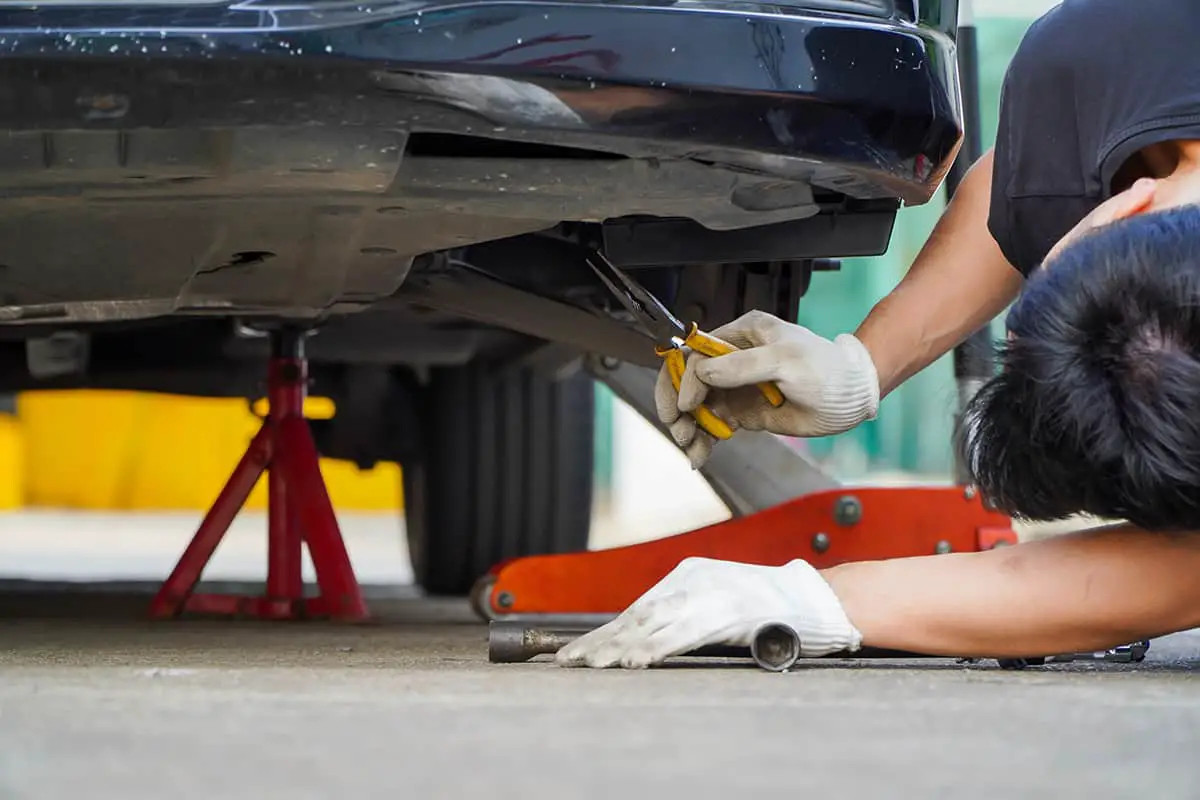
In this section, we’ll walk you through some basic repairs and replacements that you can do to keep your suspension system in top shape.
Remember, regular inspections and prompt repairs can extend the lifespan of your car’s suspension system and improve your vehicle’s performance. So, take care of your car’s suspension, and it’ll take care of you on the road.
1. Replacing Shocks and Struts
- Start by safely lifting your car off the ground using a car jack and secure it with jack stands.
- Locate the shocks or struts. They’re usually found near the wheels.
- Remove the bolts attaching the old shock or strut. You may need a wrench or socket for this.
- Once detached, remove the old shock or strut and replace it with a new one.
- Reattach the bolts and ensure everything is secure.
2. Replacing Springs
- Lift and secure your car with a jack and jack stands.
- Locate the springs. They will be near the wheels.
- Carefully remove the springs. This may require you to detach other parts, such as the struts or shocks.
- Install the new springs, making sure they are correctly positioned.
- Reattach any parts you had to remove and ensure everything is secure.
3. Replacing Bushings
- Identify the location of the worn-out bushing. They are often part of other components like control arms or stabilizer bars.
- Remove the component containing the worn bushing.
- Push the old bushing out of its holder using a bushing removal tool.
- Push the new bushing into place.
- Reinstall the component containing the bushing back to its original location.
4. Replacing Control Arms and Ball Joints
- Lift the car and locate the control arm and ball joint.
- Remove the bolts securing the control arm.
- Remove the control arm and ball joint assembly.
- Install the new control arm and ball joint.
- Securely tighten all bolts and nuts.
Note: Safety first. Always use appropriate tools, wear safety equipment, and make sure your car is securely supported if you need to get under it. If you’re not comfortable doing these repairs yourself, it’s okay! Suspension repairs can be complicated, and it’s important to have them done correctly to keep your car safe. Don’t hesitate to take your car to a professional mechanic if needed.
Cost to Replace Suspension System
The price to replace your shocks and struts can vary widely, depending on the make and model of your car and where you get the job done. On average, it can range from $200 to $1500. The price includes both the parts and labor.
Springs are generally cheaper to replace than shocks or struts. The average cost to replace a spring can range from $100 to $500 per spring. So, if you were to replace all four springs, it could cost you anywhere from $400 to $2000.
Bushings are one of the least expensive parts of the suspension system to replace. Depending on your car’s model, replacing a bushing could cost anywhere from $15 to $150 per bushing.
Replacing control arms and ball joints can be a bit pricey, as it’s a labor-intensive task. It can cost you anywhere from $200 to $500 per arm. If the ball joints are sold separately, they can cost an additional $50 to $200 each.
